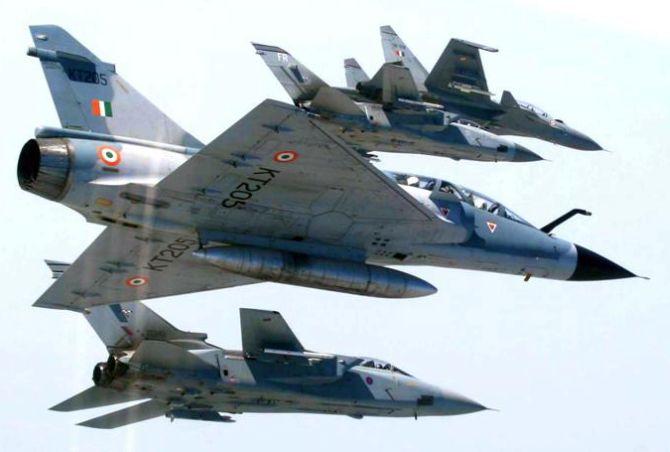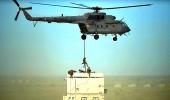They have been exposed again by the IAF's ability to strike 80 km into Pakistan without being intercepted or incurring casualties.
Ajai Shukla reports.

Indian fighter jets struck the Jaish-e-Mohammad's biggest training camp inside Pakistan in a pre-dawn operation on Tuesday, February 26, 2019, killing over 300 terrorists.
The synchronised strike, involving 12 Mirage 2000 aircraft and supported by a fleet of Sukhoi 30 jets, a mid-air refueller and two airborne warning and control systems, targeted JeM's 'five-star resort style' camp on a hilltop in Balakot, about 80 km from the Line of Control, sources said.
The entire operation lasted about 20 minutes, and came days after the February 14 suicide bombing of a convoy of the Central Reserve Police Force in Jammu and Kashmir's Pulwama in which 40 troopers were killed.
The JeM had claimed responsibility for the Pulwama attack.
Tuesday's retaliatory air strikes are the first time since the 1971 War that Indian combat aircraft crossed into Pakistan-held territory. Even during the Kargil war in 1999, when IAF fighters repeatedly struck Pakistan Army soldiers who had crossed into the Indian side of the LOC, great care was taken to ensure Indian aircraft did not violate the LoC.
But in this case, military planners realised early that Pakistan would be prepared for ground strikes. Besides, the political need was for a more forceful response. That left air strikes as the only acceptable option.
Both sides have signed onto a confidence-building measure that prohibits fixed wing aircraft from flying within 10 km of the LoC, and helicopters from coming closer than 5 km without informing the other side beforehand.
By disregarding this, the IAF has sent a stern message to Islamabad.
Since there are two Balakot towns, there was initial confusion over which target was struck, and how deep across the LoC it was. However, sources later confirmed that the strike occurred in Balakot in Pakistan's Khyber Pakhtunkhwa (KPK) province.
This raises serious questions over the capability of Pakistani air defences. Their porousness was first dramatically exposed in the US operation against Osama bin Laden in Abbottabad in May 2011.
They have now been exposed again by the IAF's ability to strike 80 km into Pakistan without being intercepted or incurring casualties.













 © 2025
© 2025